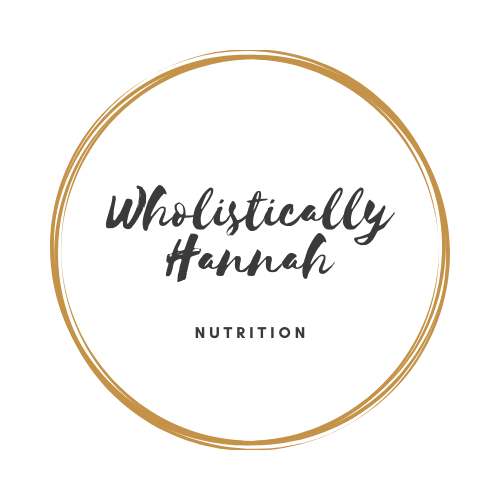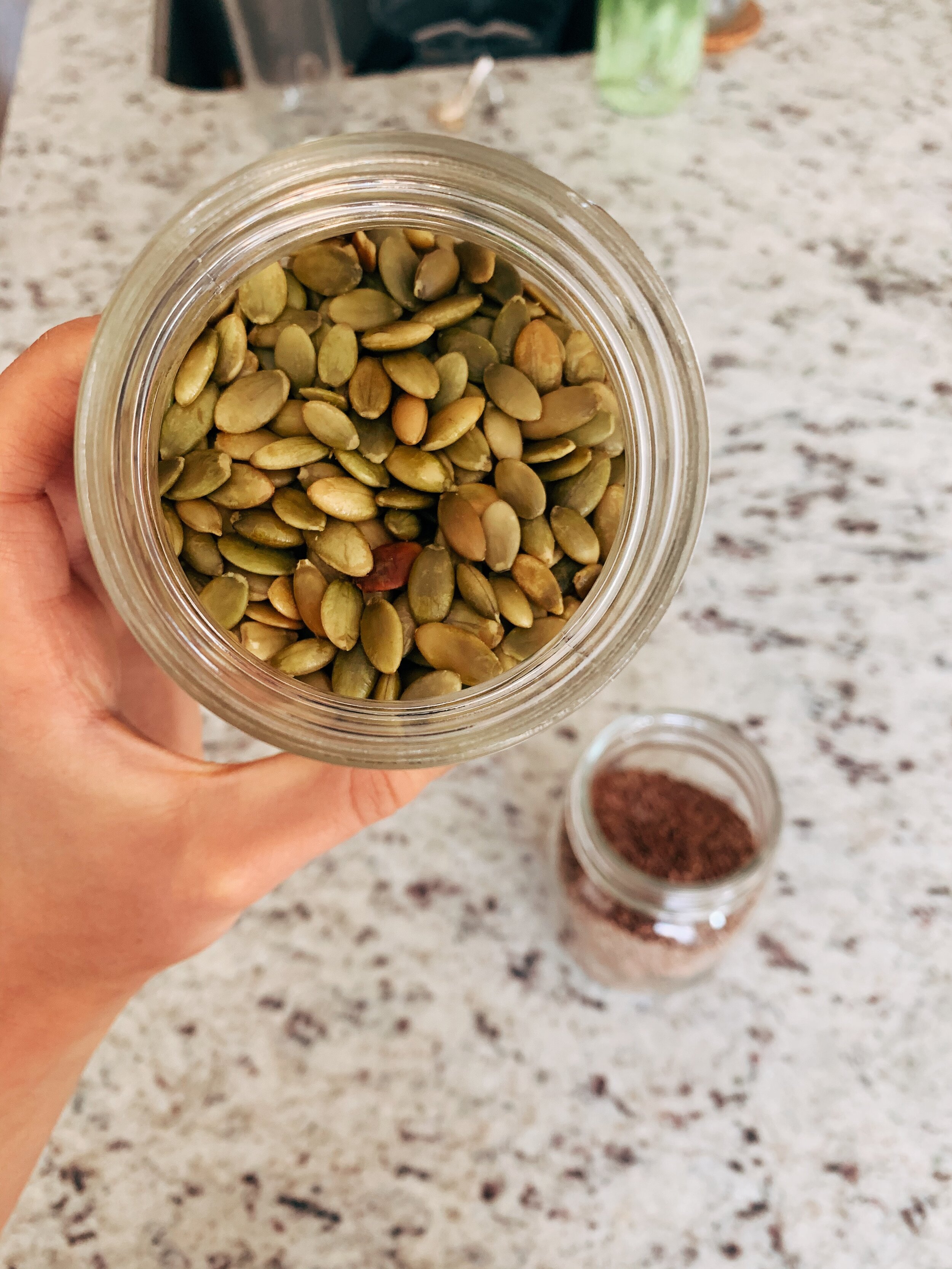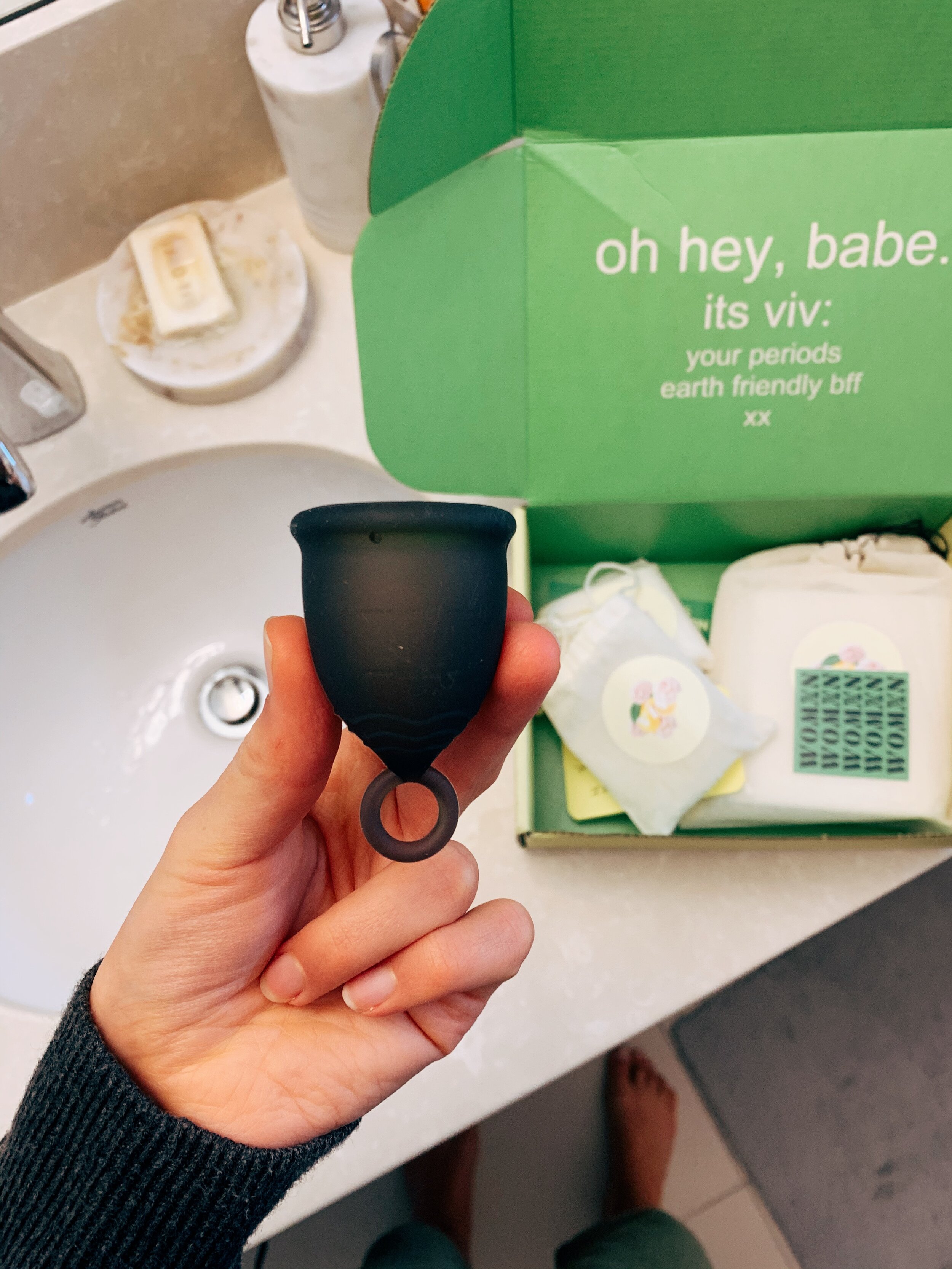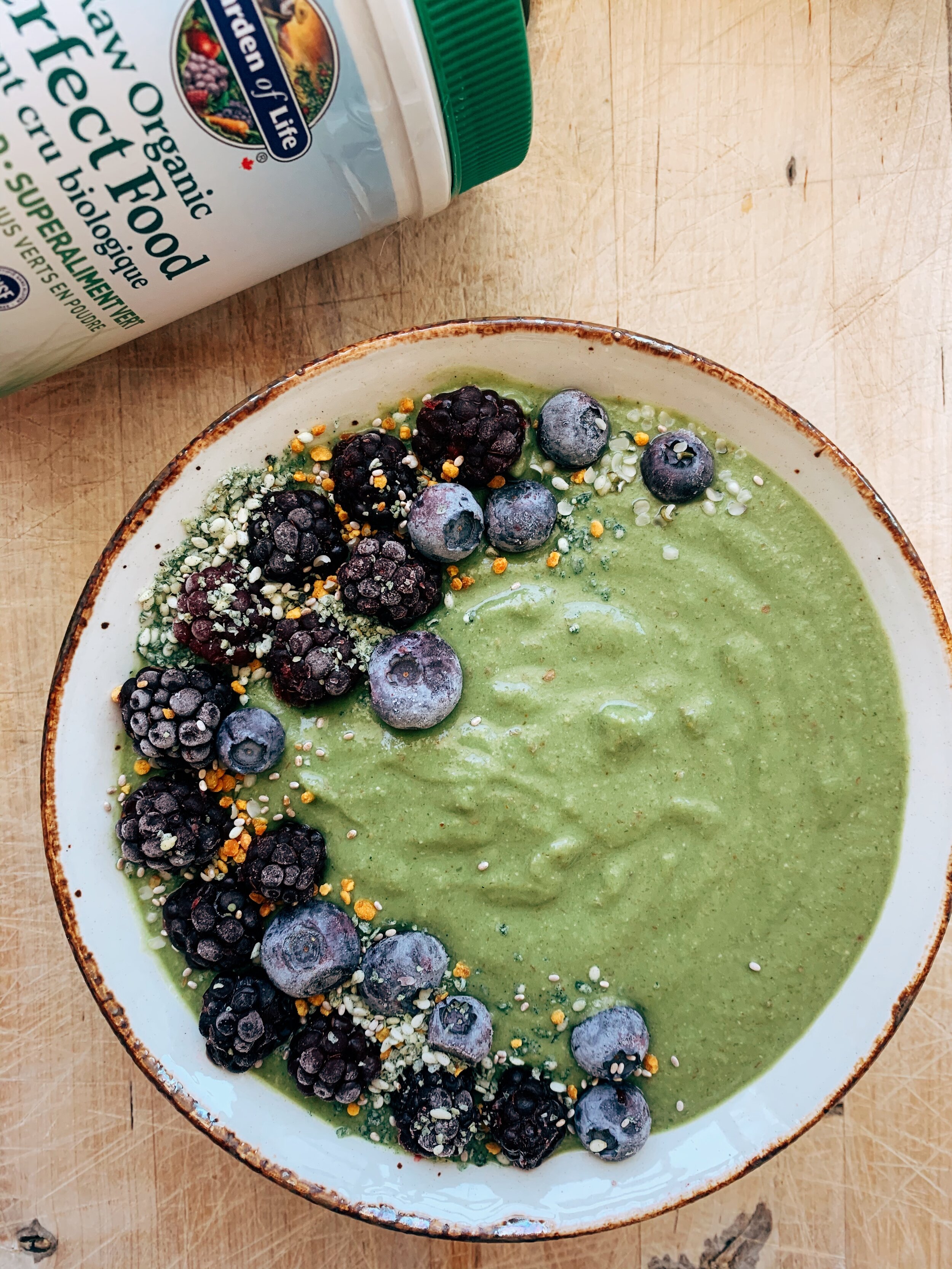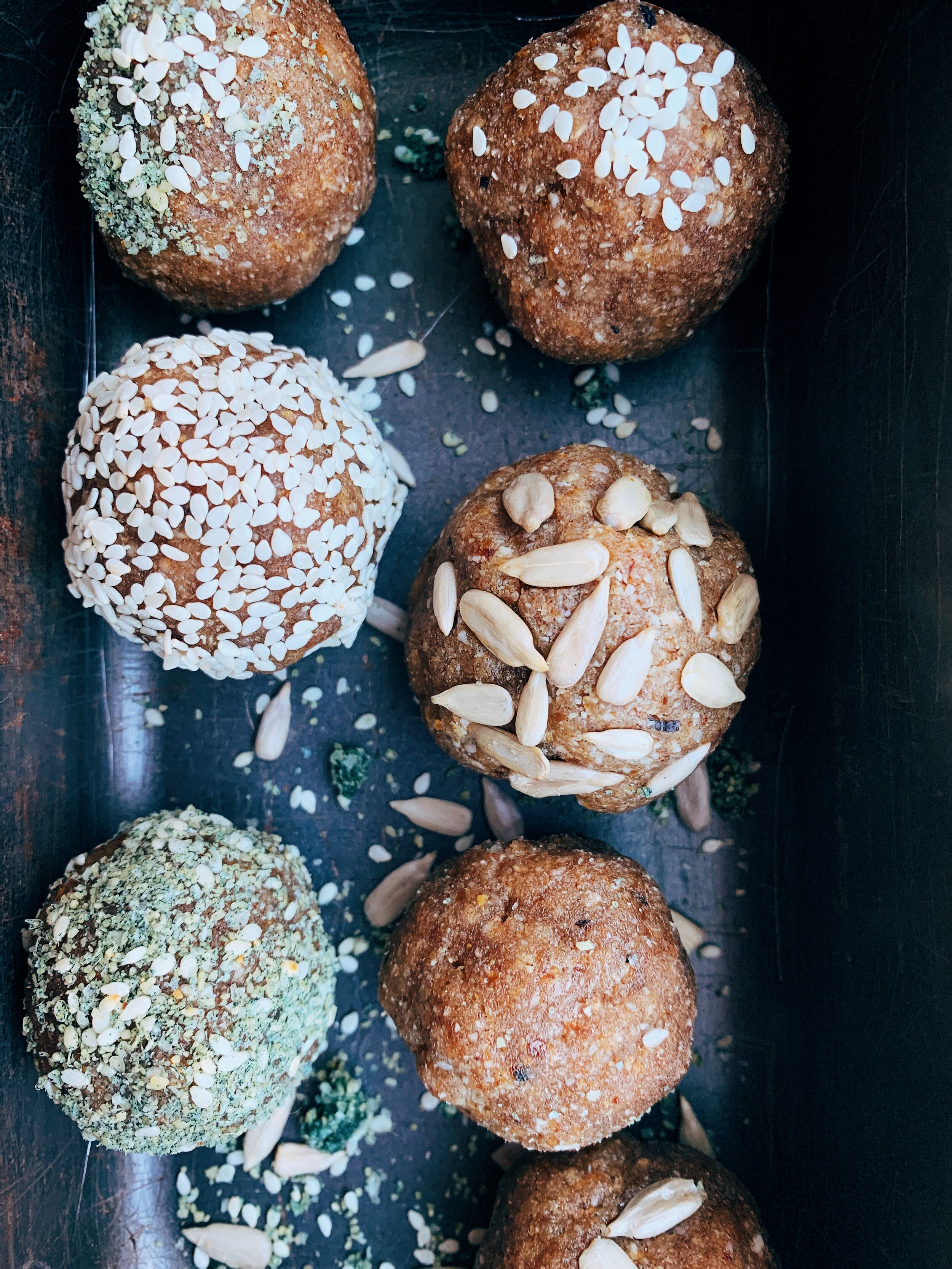A Beginner's Guide to SEED CYCLING
/I lost my period for over two years after going off the hormonal birth control pill. My hormones were a mess, and I experienced a number of unpleasant symptoms including breakouts, digestive issues, and dramatic mood swings. But with the help of Seed Cycling, supplementation, and a few simple lifestyle changes, I've been able to re-balance my hormones, regulate my cycle, and naturally bring back my period.
While seed cycling is just one of the many changes I've implemented while trying to restore my cycle, it's effectiveness should not be underestimated. Out of all the diet and lifestyle changes I made throughout my hormone-balancing journey, seed cycling has hands down been the most powerful. I remember when I first heard about seed cycling. I was intrigued, excited, and hopeful - but also very confused. I had so many questions, but no one to turn to for advice.
I created this Beginner's Guide to Seed Cycling to break down the process in a simple and easily understandable way, and to hopefully help you navigate the abundance of confusing information online. By sharing my personal experience, I hope to give you the courage and inspiration to take your health into your own hands. Our body naturally wants to heal - but sometimes, it just needs a little support
*Disclaimer - I am a Registered Holistic Nutritionist, not a doctor or medical practitioner. All information shared below is a combination of my personal experience, research, and education as a Nutritionist. For personalized medical advice, please consult a licensed Medical Doctor or Naturopathic Doctor.
What is Seed Cycling?
Seed Cycling is the process of naturally regulating our reproductive hormones by supplementing with certain seeds at specific times of the month. The unique nutritional properties in each seed are strategically used to mimic and positively affect different hormones in our bodies - specifically estrogen and progesterone.
Basic principle: using seeds to naturally regulate the menstrual cycle, ease unpleasant symptoms, rebalance hormones, reduce PMS, encourage fertility, or bring back a missing period.
How Does Seed Cycling Work?
During the first half of our menstrual cycle, the sex hormone 'estrogen' needs dominant in order for us to ovulate. However, it’s ratio is incredibly important. Estrogen needs to be present in just the right amount (not too much, and not too little!) for our hormones to remain balanced. Often, estrogen gets overproduced (or progesterone gets under produced due to stress, improper nourishment, or nutrient deficiency), which can lead to estrogen dominance and a variety of unpleasant symptoms. Other times, estrogen may be low due to excessive exercise or not eating enough. Flax and pumpkin seeds help bring estrogen levels back into balance by encouraging the right amount to be produced, while simultaneously preventing excess buildup. In the second half of our menstrual cycle, our body requires the sex hormone 'progesterone' to build the uterine lining and encourage a period. Sesame and sunflower seeds support progesterone production during this phase.
What Seeds Do I Use?
To seed cycle, you need to supplement with four different seeds: flax, pumpkin, sunflower, and sesame. I also recommend a fifth supplement: evening primrose oil. Evening primrose oil isn't always included in a seed cycling protocol, but I personally think it's incredibly beneficial to incorporate.
FLAX SEEDS - Flax is rich in omega-3 essential fatty acids. The seeds contain estrogenic-like properties that encourage healthy estrogen production, along with lignans that simultaneously block excess estrogen from being produced.
PUMPKIN SEEDS - Pumpkin seeds are rich in omega 6 and zinc; two nutrients that support our sex hormones and encourage reproduction.
SUNFLOWER SEEDS - Sunflower is an excellent source of vitamin e and selenium. The seeds contain lignans that mimic and support progesterone production.
SESAME SEEDS - Sesame is high in vitamin e, and contains the same hormone-balancing lignans as flax. The seeds encourage fertility and support progesterone balance.
EVENING PRIMROSE OIL - Evening primrose oil naturally balances our cycle, particularly encouraging menstrual bleeding. I’ve fond it to be incredibly helpful for those with amenorrhea or very light periods. The oil also reduces PMS symptoms and helps regulate our emotions.
Where to Begin:
Seeds are rotated between the follicular phase and the luteaul phase of our menstrual cycle. If you don't currently get a period (or have irregular periods) then take the seeds according to the moon's cycle. This is what I did, and it worked incredibly well for me.
IF YOU HAVE A REGULAR PERIOD
DAY 1 - FOLLECULAR PHASE (weeks 1 & 2)
Start day 1 of seed cycling on your first day of bleeding. Consume 1 tbsp of ground flax seeds and 1 tbsp of ground pumpkin seeds every day for the next two weeks, until the luteal phase begins on day 15. Use flax and pumpkin seeds to help support estrogen levels and balance extra estrogen produced during this time.
DAY 15 - LUTEAL PHASE (weeks 3 & 4)
Start day 15 of seed cycling on your first day of ovulation. Switch the seeds from flax and pumpkin to 1 tbsp of ground sesame and 1 tbsp of ground sunflower. Continue supplementing the sunflower seeds and sesame seeds daily for the next two weeks, until your period begins again. Use sunflower and sesame to help boost progesterone production during this time.
IF YOU DON'T HAVE A (REGULAR) PERIOD
DAY 1 - NEW MOON (weeks 1 & 2)
Start day 1 of seed cycling on the first day of the new moon. Consume 1 tbsp of ground flax seeds and 1 tbsp of ground pumpkin seeds every day for the next two weeks, until the day of the full moon on day 15. Use flax and pumpkin seeds to help support estrogen levels and balance extra estrogen produced during this time.
DAY 15 - FULL MOON (weeks 3 & 4)
Start day 15 of seed cycling on the first day of the full moon. Switch the seeds from flax and pumpkin to 1 tbsp of ground sesame and 1 tbsp of ground sunflower. Continue supplementing the sunflower seeds and sesame seeds daily for the next two weeks, until the day of the new moon. Use sunflower and sesame to help boost progesterone production during this time.
How to take the seeds:
Grind the seeds into a fine 'flour' before consuming, to help our body digest them easier and ensure all the nutrients are absorbed properly.
Why Should I Start?
Seed cycling is a natural way to regulate our hormones, menstrual cycle, and emotions. I recommend seed cycling to anyone who experiences:
Irregular periods
PMS
Amenorrhea (no period at all)
Symptoms of a hormonal imbalance
Seeking deeper hormone support?
Although seed cycling is a supportive tool when used in partnership with a hormone-balancing protocol, it won’t fix a deeper-rooted hormonal imbalance on it’s own. If you experience painful or heavy cycles, irregular periods, amenorrhea, PCOS, endometriosis, fertility challenges, overwhelming PMS, mood swings, cyclical acne, low libido, sleep disturbances, hair loss, or symptoms from hormonal birth control - know that you are not alone, and there is so much hope. The body can heal when given the right environment. We just have to cultivate balance again through addressing the root and beginning to fully nourish and support our body’s unique and individual needs.
As a Registered Holistic Nutritionist with a focus on women’s health and hormone balance, I offer personalized 1:1 sessions to support you on this journey. Feel free to reach out to wholisticallyhannah@gmail.com or check out the Work with Me page for more information about working together. I also offer a 76-page Wholistic Cycle Guide, that dives deep into the pillars of hormone balance, cycling syncing, and connecting with your cyclical rhythm.
FAQ'S
WHAT TYPE OF SEEDS SHOULD I USE
Look for raw, organic seeds if possible. Buying them in bulk can help to offset the cost. Make sure to store your seeds in the fridge or freezer to preserve their nutrients and prevent oxidation!
DO I NEED TO GRIND THE SEEDS, OR CAN I EAT THEM WHOLE?
It's important to grind the seeds first so our body can digest them properly. Whole seeds can be very hard to digest. By grinding the seeds, we ensure our body fully absorbs all the nutrients.
HOW DO I PREPARE THE SEEDS?
First, I pre-measure out my seeds while they're still whole. Then, I use a coffee grinder to grind them into a fine powder. I usually grind for 3-5 days in advance, and store the leftover powder in a glass container in the fridge or freezer. You can also buy preground seeds (aka flax meal) for convenience, but I don’t encourage this due to a higher chance of the seeds ‘oxidizing’ and becoming rancid. Once ground, seeds go rancid quite quickly, lose their nutritional value, and become unhealthy to consume. If it’s not realistic for you to grind your seeds every couple of days, just do the best you can. If that means grinding enough for two weeks in advance, store the remainder in the freezer to keep them fresh.
HOW SHOULD I EAT THE SEEDS?
There are tons of fun ways to incorporate ground seeds into your meals. I like blending them to smoothies, sprinkling them on oatmeal bowls, yogurt, and salads, or incorporating them in a batch of no-bake bliss balls. The options are truly endless! You can totally eat them by the spoonful, too. Just mix the ground seeds in a cup with some water and eat the paste. I also know people who eat them with a spoonful of nut butter as a quick and nourishing snack.
IS THERE AN ALTERNATIVE TO EATING GROUND SEEDS?
I personally believe Seed Cycling is most affective when we consume the seeds freshly ground. However! If this is not realistic or always possible for you, there is an alternative:
SEED BUTTER CYCLING: Seed butter cycling uses the same principles as Seed Cycling, but we incorporate seed butter as opposed to ground seeds. This can be a more convenient way of Seed Cycling, especially with a busy schedule or while traveling. Purchase organic sunflower, pumpkin, and sesame (aka tahini) butter. To incorporate the flax, you may need to make your own flax butter as I’ve never seen it in stores. To do so, process toasted flax seeds along with some coconut oil in a food processor or high-speed blender until smooth, transfer to a jar, and store in the fridge. Consume 1 tbsp of the butters in place of the seeds.
CAN I EAT OTHER SEEDS WHILE SEED CYCLING?
Yes. Eating other seeds such as chia or hemp while seed cycling does not affect the process. However, I recommend avoiding sunflower and sesame during the first half of the cycle, and pumpkin and flax during the second half of the cycle.
CAN YOU SEED CYCLE WHILE ON HORMONAL BIRTH CONTROL?
Hormonal birth control works by releasing synthetic hormones into our body. Seed cycling will not have much affect over top these artificial hormones.
CAN YOU SEED CYCLE WITH AN IUD?
It depends on the type of IUD. If you have a copper IUD, then YES! T he copper IUD does not release any hormones into our body. If you have a hormonal IUD (ex Mirena or Skyla) then seed cycling will not be as beneficial.
